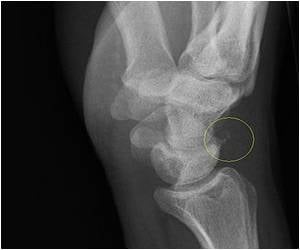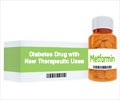A new UT Southwestern study shows how an effective but largely abandoned treatment for Type 2 diabetes named Rosiglitazone, could be used again in combination with another drug to eliminate side effects.

‘Very low dose of Rosiglitazone when combined with Compound A, reduces the incidence of weight gain, fluid retention in mouse models.’
Read More..




But studies raised concerns about the risk of heart attack in some patients, as well as a risk for osteoporosis and evidence of increased weight gain and fluid retention.Read More..
In a mouse study, the combination of Compound A with the minimal dose of rosiglitazone produced a similar degree of insulin sensitization as the maximal dose of rosiglitazone, according to the report.
"The very low dose we used in this study showed no side effects - no weight gain, no fluid retention - in mouse models," says Dayoung Oh, Ph.D., senior author of the study, assistant professor of internal medicine, and a researcher in UT Southwestern's Touchstone Center for Diabetes Research.
Additional research is needed to check for bone loss and heart problems at the lower dose, she says, but those effects too could likely be eliminated or lessened by reducing the dosage of rosiglitazone.
In 2010, responding to studies reporting an increased risk of heart attack in rosiglitazone patients, the FDA issued prescribing and dispensing restrictions on the drug. Those were lessened in 2013 and removed entirely in 2015 after the FDA determined the data did not show an increased risk of heart attack with rosiglitazone. However, usage of rosiglitazone has remained low.
Advertisement
According to the Centers for Disease Control and Prevention, about 34 million Americans suffer from diabetes, and 90 to 95 percent of those cases are Type 2 diabetes. The disease can lead to kidney or heart disease and stroke, and can be fatal.
Advertisement
The study showed that Compound A, a small molecule developed by Merck & Co. Inc., works much like the omega-3 fatty acids enriched in fish oil, a natural GPR120 activator, to lower inflammation and improve insulin sensitivity.
While mice that were given the minimal dose of rosiglitazone alone failed to show improved insulin sensitivity, those given Compound A in combination with low-dose rosiglitazone had enhanced insulin sensitivity, according to the study.
Oh says she would like to work with interested clinical researchers to test Compound A to boost rosiglitazone's effectiveness and reduce its side effects in patients at the lower dose.
She also plans to do additional research to uncover the specific mechanism by which GPR120 activation reduces rosiglitazone's side effects.
"The hope is that we will be able to use rosiglitazone at lower doses to treat Type 2 diabetes patients in a more effective way without side effects," Oh says.
Source-Eurekalert












